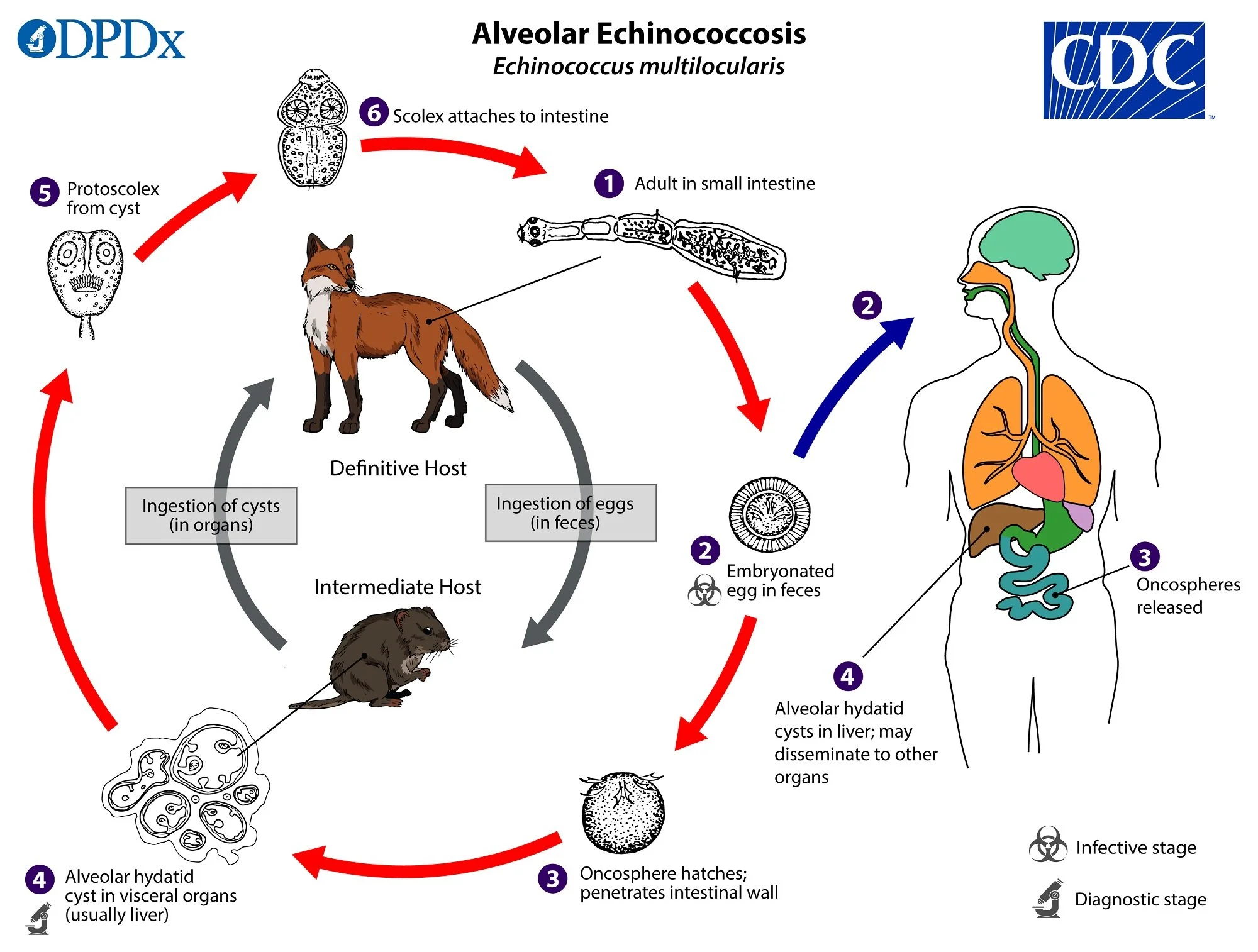
Echinococcus Information
What is Echinococcus multilocularis?
It’s a small tapeworm that infects wild canids such as, red foxes, coyotes, wolves, raccoon dogs, and domestic dogs and cats.
The adult tapeworms infect the small intestine of the definitive host.
The adult worms produce eggs in the feces of infected animals.
The adult tapeworm is hard to see with the naked eye.
How do animals become infected?
Animals typically become infected by predation by eating infected rodents.
Infection can also occur by ingesting the infected eggs from the environment.
How is the infection diagnosed in dogs?
Diagnosis starts with a thorough physical exam at a local veterinary clinic.
Then, a fecal flotation looking for eggs, and confirmed through molecular testing.
Does Echinococcus multilocularis infect humans?
Yes, a disease called alveolar echinococcosis develops.
After accidental ingestion of the infective egg, the larvae develop in the liver and lung slowly overtime.
Humans cannot infect other humans, therefore, we are considered dead-end hosts.
Treatment is often unsuccessful and the disease is potentially fatal.
For more information on human infections, visit CDC Echinococcosis Information.
Life cycle of Echinococcus multilocularis demonstrating how foxes (definitive host) and humans (accidental host) become infected.
How do you protect yourself from infection?
ALWAYS wear gloves when handling specimens.
ALWAYS wear gloves or use a plastic bag to pick up animal feces.
WASH HANDS thoroughly using soap and water after handling specimens and feces.
Where are Echinococcus spp. found in North America?
Current prevalence of Echinococcus multilocularis in Canada, Greenland, and the United States found in wild canid definitive hosts.
Deplazes et al., 2017


